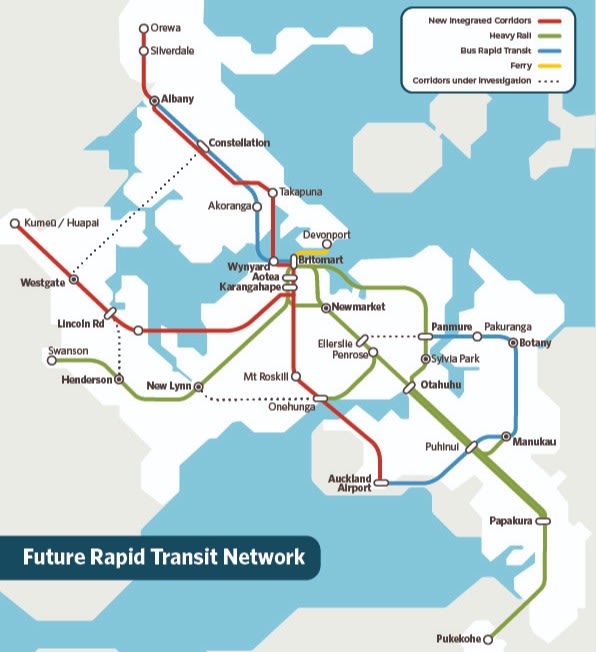
Ministers have announced a $14.6 billion partially-tunnelled light rail project to Auckland Airport, assuring worried business leaders of a support package to keep them afloat through years of construction.
This morning, Infrastructure Minister Grant Robertson had to allow 55 mins in a chauffeured ministerial limo getting from Auckland's airport into the CBD to announce new transport infrastructure. His Cabinet colleague Michael Wood caught a bus from his home in Mt Roskill.
But their successors, they say, will be able to get there in half the time, by light rail.
The two ministers have announced a decision to run a line above ground from the airport, through Māngere and Onehunga up to Mt Roskill, then to drill a tunnel all the way to the CBD. 24km in total, with trams running every five minutes, capable of carrying up to 15,000 passengers per hour at peak – at least, that's the plan.
This line is expected to remove the equivalent of 13 car lanes, taking 12,000 cars off the road, which they say is a great result for local streets, communities and carbon emissions.
As they prepare to get that work underway, Aucklanders will be consulted this year on a light rail and rapid transit tunnel beneath Waitematā Harbour. The $14.6b airport light rail tunnel would initially terminate at Wynyard Quarter, but ultimately connect to a new $15b harbour crossing to the North Shore and light rail proposed all the way to Ōrewa.
Ministers have not yet confirmed how long the project will take to complete, but the first concrete action will be to assign some of the billions of dollars in infrastructure funding in the Budget in May – with works intended to begin in 2023.
It is understood the money will come from a combination of central government funding and financing, ratepayer contributions – and requiring developers to make a contribution as "value capture" against the ultimate benefits to their projects, under the Funding and Financing Act.
The Government and business will hope to lessen the disruption by taking the more expensive option of drilling the Roskill-to-Wynyard tunnel, rather than using the cut-and-cover technique adopted for much of the City Rail Link. But even so, the plan requires the construction of 18 stations – each one of those at the heart of a suburban community.
"We are making a commitment to businesses in the area that significant disruption will be addressed through a comprehensive package, including direct financial support." – Michael Wood, transport minister
Viv Beck, chief executive of Heart of the City, expressed her concern. The Government still hadn't adequately addressed the hardship suffered by businesses disrupted by the City Rail Link construction, she said, and now it was embarking on another major infrastructure project.
"We need major infrastructure projects to be successful for our city and this issue must be resolved otherwise many more businesses across the city will have their lives and livelihoods decimated," she said.
“If a green light is given to the Light Rail project, we have to see a significant commitment to supporting business impacts. Anything half-hearted won’t cut it, just ask any businesses in the Albert Street area.”
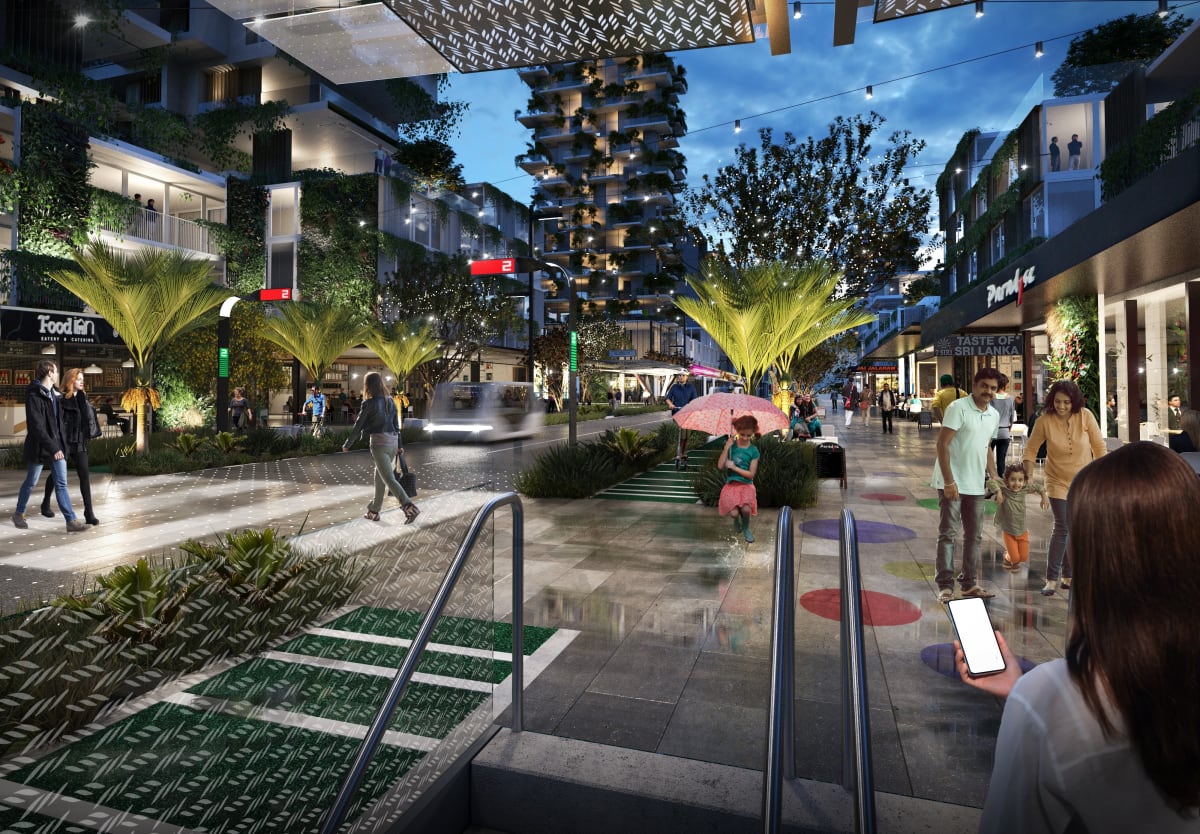
The ministers said the airport-to-city light rail would accelerate Auckland's economic recovery with the creation of up to 97,000 new jobs, and 66,000 homes by 2051. But acknowledging the impact of the disruption, they promised the Government would develop a business support package alongside affected businesses.
“Addressing future disruption is front of mind for the Government, and designing a support package alongside business will be a major part of this engagement in 2022," Wood said. "We are making a commitment to businesses in the area that significant disruption will be addressed through a comprehensive package, including direct financial support."
“We have deliberately chosen this option for Auckland Light Rail that will integrate with other major infrastructure projects across Auckland, like the additional Waitematā Harbour crossing, the Auckland Rapid Transit Plan and Kāinga Ora Large Scale Projects." – Grant Robertson, Finance Minister
Today's announcement confirms plans for integrated routes – which ministers see as including light rail – to go out to Kumeū in the north-west, and across the harbour to Ōrewa in the north, as well as to the airport.
Wood noted the urgent need to confirm plans for an integrated network across the region; the Northern Busway is growing by 20 percent a year and will run out of capacity in 10-15 years.
The Government was committed to an additional Waitematā Harbour crossing, he said, and intended to confirm its preferred option next year, after this year's consultation.
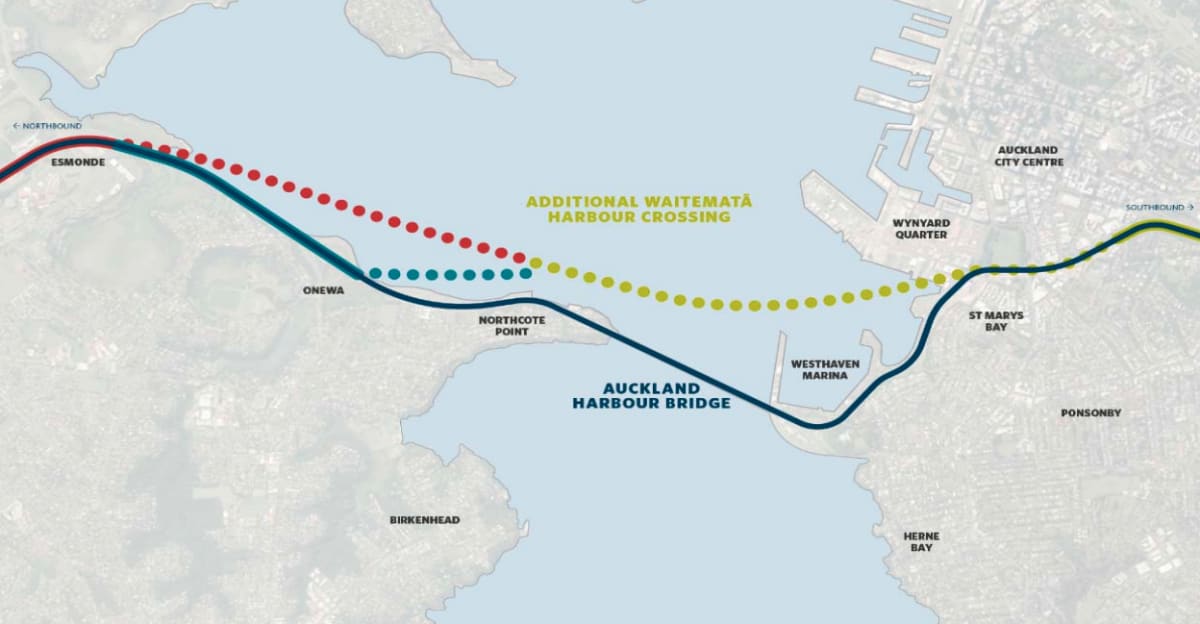
“To kick the can down the road could either preclude a second crossing from being a possibility in the future, or require what will be established transport infrastructure to be reconstructed meaning additional costs."
Auckland’s population is projected to rise to two million by early next decade, and to 2.4 million by 2051.
"It is the most important transport project that any government has embarked on for the future of our city." – Phil Goff, Auckland Mayor
Robertson said to move two million people around New Zealand's largest city safely and efficiently, the community needed well-planned and connected infrastructure.
The new route will have major stops in Māngere, Onehunga and Mt Roskill – which are all locations of big Kainga Ora-led house-building projects. It will Include safe walking and cycling along the corridor and with connections to all stations.
“We have deliberately chosen this option for Auckland Light Rail that will integrate with other major infrastructure projects across Auckland, like the additional Waitematā Harbour crossing, the Auckland Rapid Transit Plan and Kāinga Ora Large Scale Projects,” Robertson said.
He did not see it as a transport project, he told gathered community leaders at the Viaduct Harbour this morning. "I see it as about a low carbon, more productive city."
Auckland mayor Phil Goff went further: at the announcement, he said it was the largest and most expensive transport infrastructure project ever undertaken in New Zealand. "It is the most important transport project that any government has embarked on for the future of our city."
He rejected calls from the National Party's transport spokesperson Simeon Brown to prioritise a new road crossing of Waitematā Harbour, instead. ""That would be a disaster for our city. We don't need more cars.... Billions and billions of dollars will be lost to our economy if we continue to have gridlock."
Auckland's current big infrastructure project, the City Rail Link taking heavy rail trains underground 3.4 km from the Britomart station up town to Mt Eden, is expected to be completed in 2024. It is being built by a joint Crown-Auckland Council-owned venture, with the parties splitting the $4.4 billion cost. But as Viv Beck notes, the different partners have failed between them to resolve the significant hardship caused to retailers and other businesses disrupted by the long building project.
The Government will hope to learn from those mistakes with the light rail project, which would realise a Labour Party campaign promise in 2017 when it came to power. That was derailed by dysfunction between central and local government agencies and a public-private partnership proposal that was stopped by Labour's coalition partner NZ First.
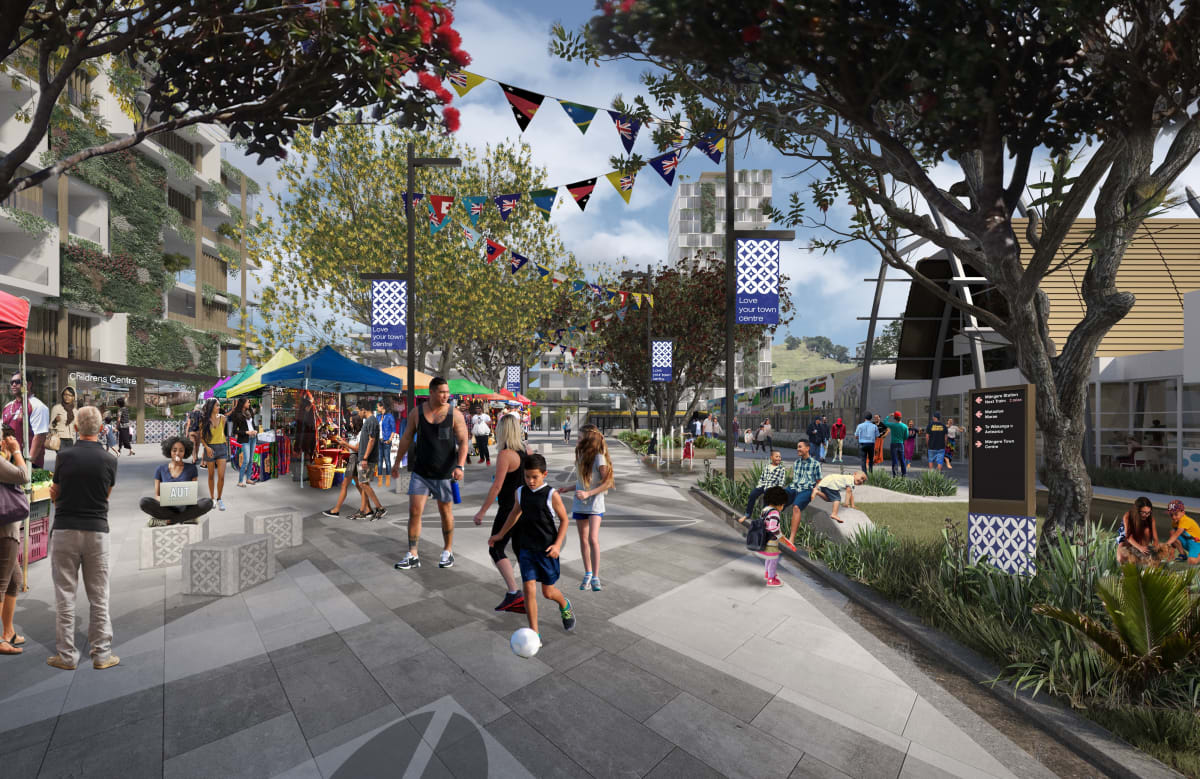
Wood then set in place an expert group led by former Manukau City Council chief executive Leigh Auton, tasked last year with consulting widely. Its report says the tunnelled option would deliver higher levels of patronage.
That would be a plus in the city's drive for public transport and carbon neutrality, but the scale of construction in concrete, steel and undergrounding parts of the route would mean the levels of embedded carbon were higher than for the overground light rail.
That light rail version would reach carbon neutrality in about 25 years, about a decade before the tunnelled light rail option.
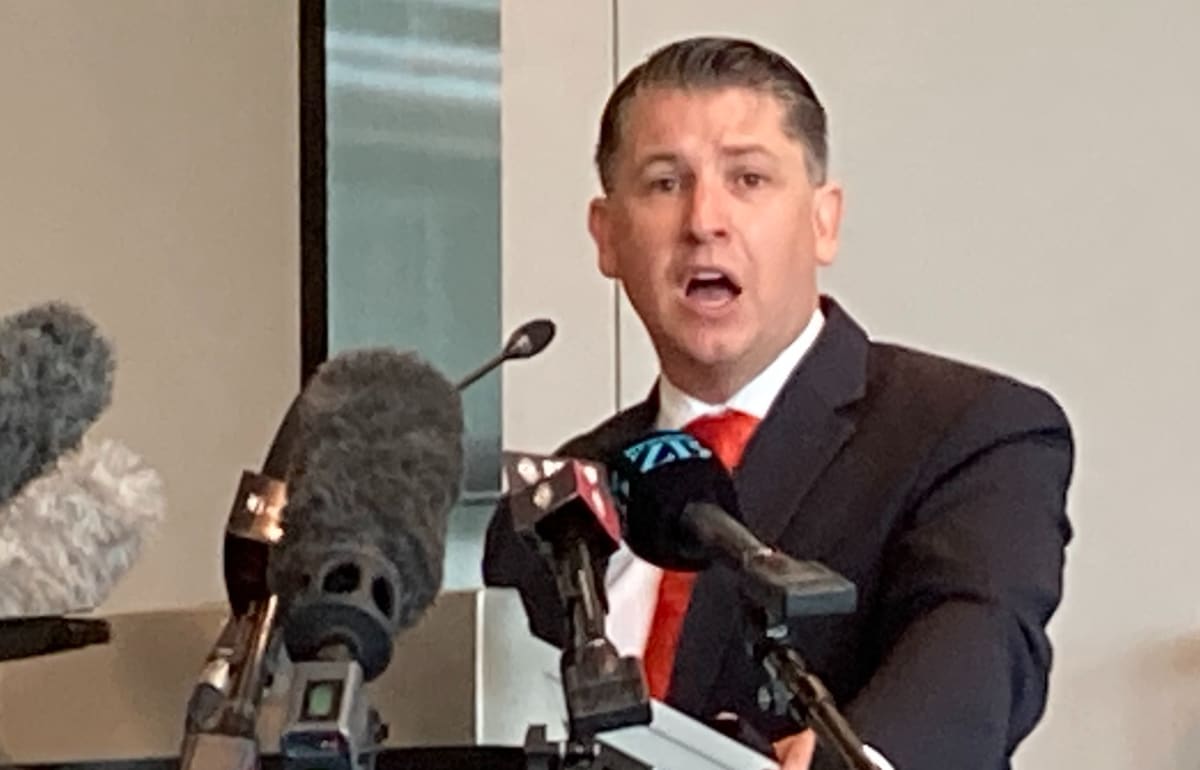
Auckland Business Chamber chief executive Michael Barnett welcomed progress on a plan. "We’re all pleased to see progress on these projects, but announcing a plan is a long way from actually building anything. For both projects, massive questions are going to need to be answered about value for money and benefits for the wider transport network. "Light rail to the airport will be great for people that live and work in that corridor, but not much help for cars and trucks struggling to get around the rest of Auckland. We’re really concerned that current plans for the Harbour crossing won’t see a new road connection for 20-plus years, and will add very little extra north-south lane capacity – Auckland needs better."

